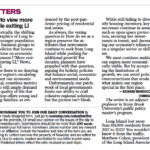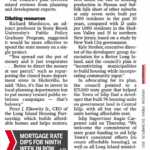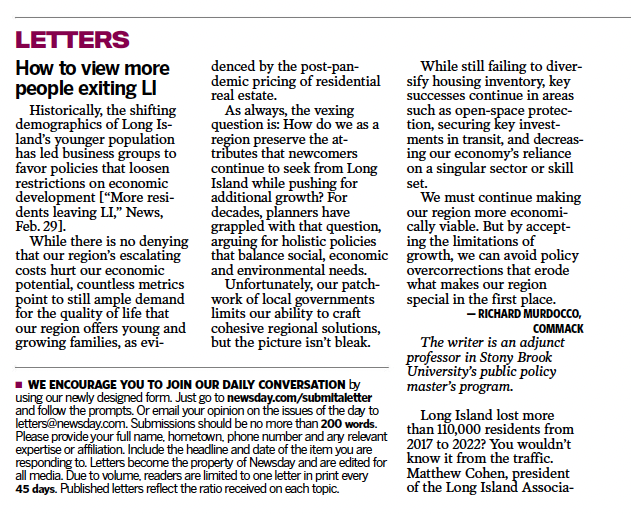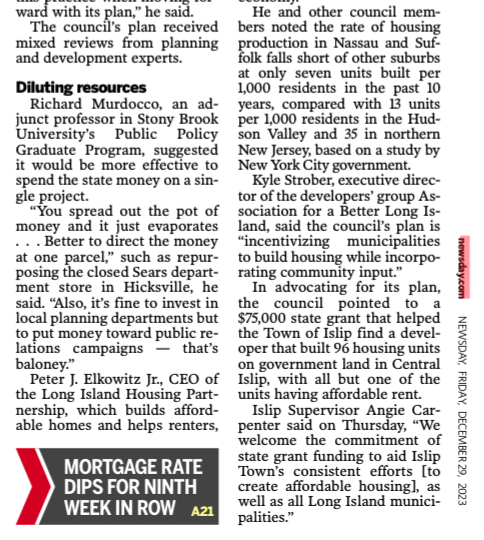The Age of the Mega-Project
The times, they are a’ changing.
Long-stalled projects within the Town of Islip (and across Long Island) are getting new life thanks to pro-growth government incentives, focused implementation and the perceived growing acceptance of multi-family developments. What once seemed impossible to build in a suburban setting is now being proposed with new zeal, paired with ample mention of this column’s favorite terms “Smart Growth” and “Brain Drain“. Add to these the need for “housing for LI’s young professionals”, and any project long debated, no matter how large in size and scope, now will get a second look.
Projects such as Wolkoff’s Heartland Town Square and Serota’s Islip Pines have been lingering in development purgatory for decades, but it seems that local government’s attitude is becoming more amenable to the execution of the “mega-project”.
The question remains- in our zeal for the Nassau-Suffolk region to build our way out of the recession, are we executing sound land use planning?
Heartland: The City in Brentwood
Pilgrim State Hospital has a complex, dark history. From a land use perspective, the once-sprawling 1,000 acre site in the heart of Brentwood can represent many things. To Jerry Wolkoff, the 462 acres of the site he purchased for $21 million in 2001, represents the opportunity to reshape Long Island. The proposed development includes 9,000 rental apartments, 1 million square feet of retail space and more than 3 million square feet of offices, as reported by LIBN. The project has been discussed, debated and mulled since it’s initial proposal by Wolkoff in 2002, with the future of the site being debated since the 1992 Special Groundwater Protection Area Plan conducted by the Long Island Regional Planning Board.
If the Town of Islip approves the Final Generic Environmental Impact Statement (FGEIS), the project is closer to “shovels in the ground” for Phase 1, or 3,500 apartments. While 9,000 housing units may be optimistic, the biggest hurdle for Heartland is the accompanying infrastructure.
Traffic concerns are often overused by opposing residents. On Long Island, “Concerns about Traffic” can be tossed around by NIMBY groups when a neighbor wants to add a new mailbox. However, in the case of Heartland, the traffic concerns are real. It has been estimated that the Heartland project at full build out as proposed will generate enough traffic volume to justify not only an expansion of the Sagtikos/Sunken Meadow Parkway, but rather an additional lane on the LIE. To date, these concerns have not been adequately addressed by either the developer, Town of Islip or NYS DOT. There is a reason why this project has lingered in purgatory- our current push to address our perceived regional problems should not let us rush a project that can change the face of Western Suffolk County until the significant concerns are met.
Islip Pines
Further east, Islip Pines is being proposed by Serota Properties on a 143-acre tract off of Sunrise Highway in Holbrook. As reported by Newsday’s Candice Ruud, Serota is proposing a mixed-use development that includes 350 units of housing, 339,000 square feet of retail, 818,000 square feet of industrial space, a great lawn and six ball fields. The Suffolk County Planning Commission recently approved the proposal with conditions that dictate the development be properly phased to maintain “a ratio of uses for the mixed use component and a phasing schedule.”
Like Heartland, traffic concerns are justifiable (albeit on a much smaller scale), but the real question is what impacts will the project’s ample retail have in the already saturated retail market. Often, I write that we need to diversify our economy beyond retail and hospitality usage. Is this proposal helping or hurting? The ample proposed industrial space should be commended, but does industrial usage conflict with residential dwellings? These are not minor questions, and they should be addressed.
Large Projects, Large Impacts
The worst sin of urban planning is when the practice is done to purposely stall development. Often, the planning process is hijacked for nefarious purposes, and each time this happens, the legitimacy of the science behind the process is de-legitimatized in the minds of the public, policymakers and developers. In both cases in the Town of Islip, the planning process has been done to rightfully question certain aspects of both projects that raise concerns. Residents and neighbors in the immediate area should not be the only Long Islanders concerned with the long-term implications of these proposals.
Rather, all Long Islanders should start to pay attention to what’s going on beyond their Village and Town borders. Two weeks ago, I wrote about the pro-development zeitgeist that we’re seeing on Long Island. Can we afford to poorly execute the planning process properly with 9,350 units of housing and hundreds of thousands of square feet of retail, commercial and industrial uses looming on the horizon?
The concept of the mega project on Long Island isn’t wholly unrealistic, nor is the notion of dreaming big a bad thing. On Long Island and across the nation, suburban areas are struggling with issues of stagnation that have been increasingly difficult to overcome. However, the concept of the mega-project runs into the realities of our region’s environmental constraints and the limitations of our current infrastructure. If our aquifers are already showing signs of development-related degradation (with a lag of roughly 20 years- groundwater contamination takes decades to travel), and our roads are already overburdened during off peak hours, is it wise to build in areas where the capacity to adequately absorb the growth is questionable?
Many shun the planning process- but there is a difference between “planning to plan” and getting it right. Let’s make sure we get it right.










